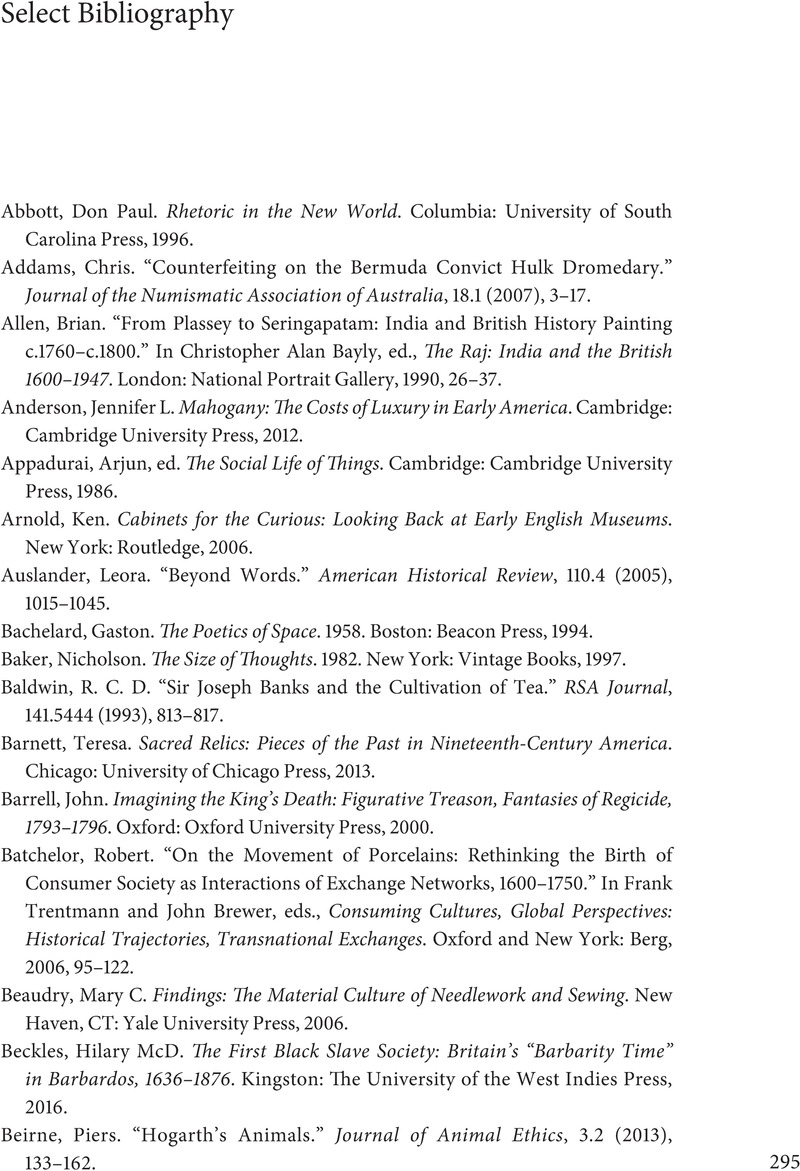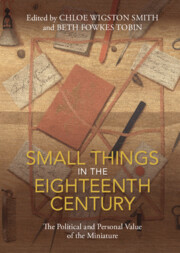Book contents
- Small Things in the Eighteenth Century
- Small Things in the Eighteenth Century
- Copyright page
- Contents
- Figures
- Notes on Contributors
- Acknowledgments
- Introduction
- Part I Reading Small Things
- Part II Small Things in Time and Space
- Part III Small Things at Hand
- Part IV Small Things on the Move
- Afterword
- Select Bibliography
- Index
- References
Select Bibliography
Published online by Cambridge University Press: 29 September 2022
- Small Things in the Eighteenth Century
- Small Things in the Eighteenth Century
- Copyright page
- Contents
- Figures
- Notes on Contributors
- Acknowledgments
- Introduction
- Part I Reading Small Things
- Part II Small Things in Time and Space
- Part III Small Things at Hand
- Part IV Small Things on the Move
- Afterword
- Select Bibliography
- Index
- References
Summary

- Type
- Chapter
- Information
- Small Things in the Eighteenth CenturyThe Political and Personal Value of the Miniature, pp. 295 - 308Publisher: Cambridge University PressPrint publication year: 2022

